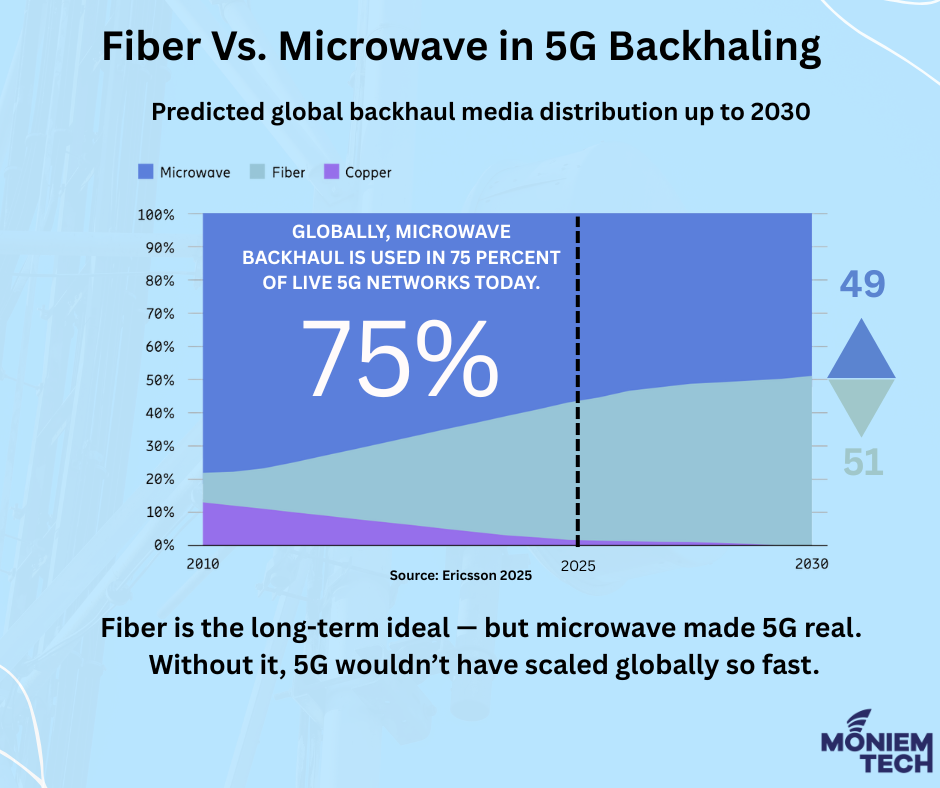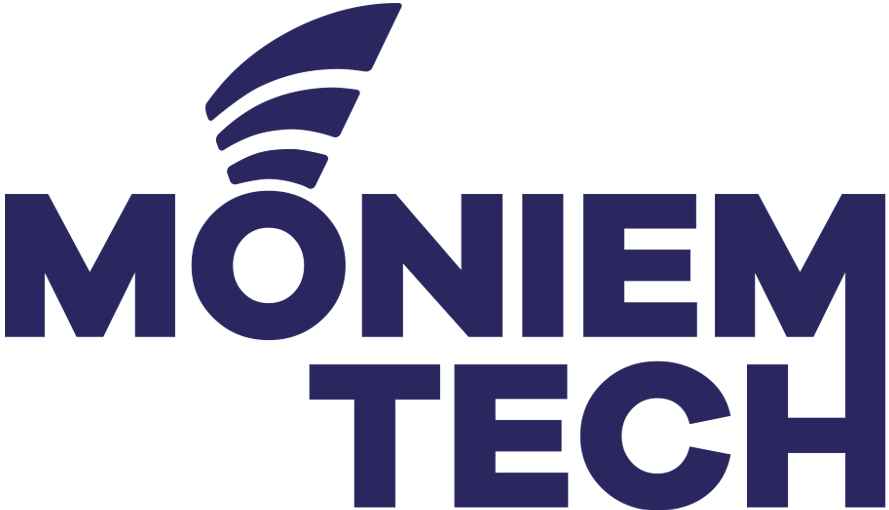Fiber is the king of capacity — but Microwave is the knight of speed, flexibility, and reach. The choice between fiber and microwave is not about which is “better,” but which is right for the location and region as well.
When 5G first emerged, the industry consensus was that #fiber would be the only viable backhaul medium — due to its massive throughput and ultra-low latency. Yet, in practice, around 75% of live 5G networks today rely on microwave backhaul, according to the Ericsson Microwave Outlook report, June 2025.

Fiber offers unmatched performance with multi-terabit capacity, sub-millisecond latency, and long-term scalability. However, it is slow and costly to deploy, as trenching, civil works, and permits can take months or even years. Plus, in many regions, Fiber coverage isn’t available — especially outside dense urban centres. Therefore, operators had to turn to microwave technology to expand 5G coverage rapidly.
On the other hand, modern Microwaves are not what they were during the 3G or 4G days. Now, we can see that E-band (70/80 GHz) systems deliver up to 20 Gbps per link, with a feature that allows for doubling the capacity on the same channel. Plus W- and D-bands are emerging, offering even more spectrum and throughput potential. In practice, modern microwave can now match fiber for 5G needs in most deployment scenarios.
E-band deployments have surpassed the 38 GHz band, with W- and D-bands emerging as future spectrum leaders, accounting for 8% globally. Therefore, laying fiber to every cell site is not financially viable, especially in rural or low-density areas; microwave provides the best cost-performance balance during the early 5G rollout phases.
Hybrid Networks and Strategic Redundancy
Many operators now use hybrid transport architectures:
- Fiber for core and high-traffic urban sites.
- Microwave for suburban, rural, or backup links.
Microwave is also used as a redundant link, offering resiliency if the fiber is cut or undergoing maintenance. This hybrid model delivers both reliability and flexibility.
